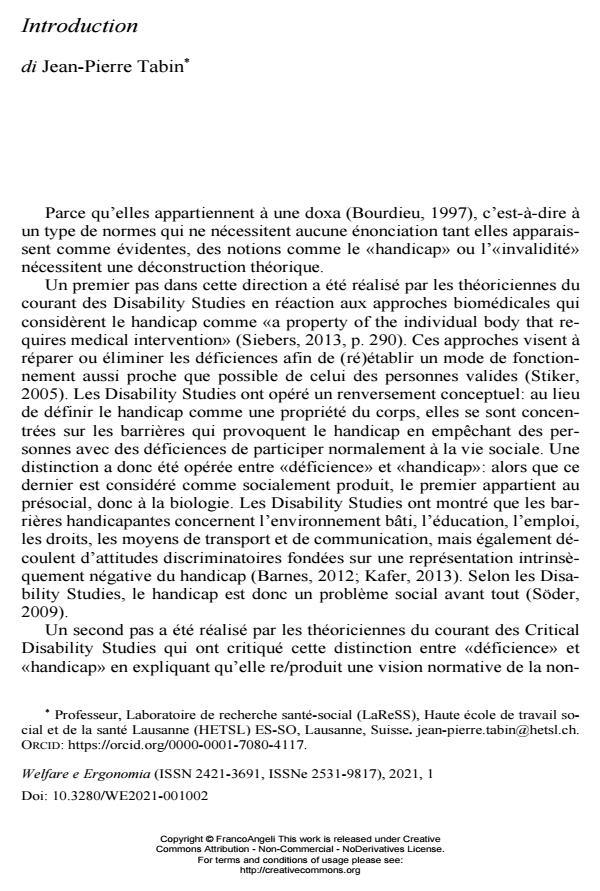Introduction
Titolo Rivista WELFARE E ERGONOMIA
Autori/Curatori Jean-Pierre Tabin
Anno di pubblicazione 2021 Fascicolo 2021/1
Lingua Inglese Numero pagine 6 P. 9-14 Dimensione file 124 KB
DOI 10.3280/WE2021-001002
Il DOI è il codice a barre della proprietà intellettuale: per saperne di più
clicca qui

FrancoAngeli è membro della Publishers International Linking Association, Inc (PILA)associazione indipendente e non profit per facilitare (attraverso i servizi tecnologici implementati da CrossRef.org) l’accesso degli studiosi ai contenuti digitali nelle pubblicazioni professionali e scientifiche
Jean-Pierre Tabin, Introduction in "WELFARE E ERGONOMIA" 1/2021, pp 9-14, DOI: 10.3280/WE2021-001002